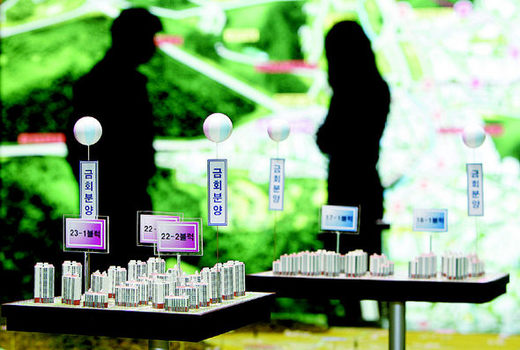 |
Those outside highest income bracket excluded from home ownership
The ratio of housing supply as compared to households seeking ownership has increased dramatically for the past five years, surpassing 1:1, but households who own their properties remained stagnant at around 55 percent. Yun Ju-hyeon, senior researcher of the state-run Korea Research Institute for Human Settlements (KRIHS), said the situation is such that "rich people purchase more than one house, while poor people can’t buy one." In a brief issued by the KRIHS yesterday, results of a survey by the institute based on census results from the Korea National Statistical Office (NSO) found that "the increase of persons possessing their houses is minor compared to an increase of the supply of homes." The brief called for a change in policy to reflect the diverse needs of South Korean households wishing to become homeowners.The number of empty housing units increased by 1.75 million between 2001 and 2005, where as the number of households, or family units, increased by 561,000 in the same period. As a result, the percentage of housing units supplied out of total households demanding ownership rose from 96.2 percent to 105.9 percent over the four-year period. But those households living in self-owned homes saw a mere 2.3 percent increase between 1995 and 2005, hovering around 55.6 percent. Out of the entire 15,887,000 households in the nation, those without ownership of their property number 6,310,000, or 39.7 percent. Those owning one home stood at 8,528,000 and those households owning two or more homes numbered 1,047,000. Empty housing units increased to 727,000 last year, compared to 513,000 in 2000. Up to 90.9 percent of new homes built after 1980 were constructed in urban areas. Due to the rapid aging of the population, the percentage of family units aged over 60 increased to 22.4 percent from 19.4 percent five years ago. In comparison, the percentage of households younger than 40 decreased to 31.3 percent from 36.5 percent. Yun at the KRIHS called the percentage of apartments out of the nation’s total housing units "too much, at 52.7 percent. From now on, we need to supply various types of housing according to district, household makeup, and people’s ability to pay. In addition, in preparation for impending changes in the rental market structure, we should promote the monthly rental market, as well as use empty houses in farming villages" to solve the nation’s housing problems, he said.





